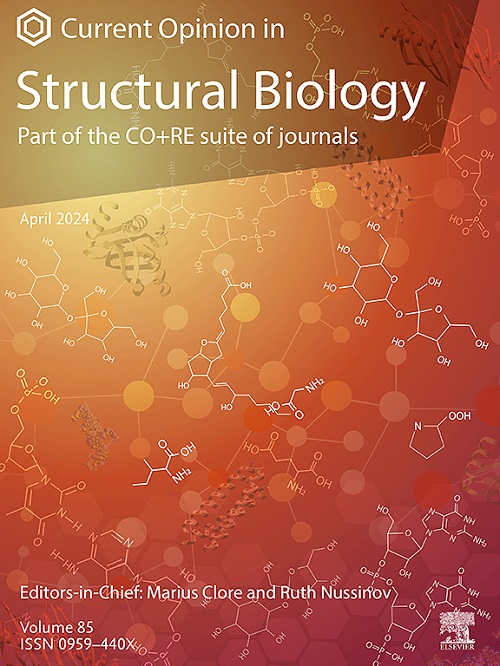Unsymmetric or hybrid detergents for membrane protein structural study
IF 6.1
2区 生物学
Q1 BIOCHEMISTRY & MOLECULAR BIOLOGY
引用次数: 0
Abstract
Detergent micelles are widely used as a membrane-mimetic system for membrane protein extraction, isolation and structural study. Many recently developed detergents feature multiple tail and head groups, with architectures that are symmetric (i.e. the same alkyl chain) and non-hybrid (single head group type). Further diversification has involved incorporating structural differences in the tail groups (unsymmetric), head groups (hybrid), or both head and tail groups (unsymmetric hybrid). In this mini-review, we introduce these novel detergents, focusing on the relationships between their structural features, physical properties and performance in membrane protein applications. The detergent design strategy utilizing unsymmetric/hybrid structures expands the detergent repertoire and the detergent structure–property-efficacy relationships presented offer valuable design guidelines, collectively advancing membrane protein research.
用于膜蛋白结构研究的非对称或杂化洗涤剂
洗涤剂胶束作为一种模拟膜的系统被广泛应用于膜蛋白的提取、分离和结构研究。最近开发的许多洗涤剂具有多个尾和头基团,其结构是对称的(即相同的烷基链)和非杂化的(单头基团类型)。进一步的多样化包括纳入尾部组(不对称)、头部组(杂交)或头尾组(不对称杂交)的结构差异。在这篇综述中,我们介绍了这些新型洗涤剂,重点介绍了它们的结构特征、物理性质和膜蛋白应用性能之间的关系。利用非对称/混合结构的洗涤剂设计策略扩展了洗涤剂的种类,提出的洗涤剂结构-性能-功效关系提供了有价值的设计指南,共同推进了膜蛋白的研究。
本文章由计算机程序翻译,如有差异,请以英文原文为准。
求助全文
约1分钟内获得全文
求助全文
来源期刊

Current opinion in structural biology
生物-生化与分子生物学
CiteScore
12.20
自引率
2.90%
发文量
179
审稿时长
6-12 weeks
期刊介绍:
Current Opinion in Structural Biology (COSB) aims to stimulate scientifically grounded, interdisciplinary, multi-scale debate and exchange of ideas. It contains polished, concise and timely reviews and opinions, with particular emphasis on those articles published in the past two years. In addition to describing recent trends, the authors are encouraged to give their subjective opinion of the topics discussed.
In COSB, we help the reader by providing in a systematic manner:
1. The views of experts on current advances in their field in a clear and readable form.
2. Evaluations of the most interesting papers, annotated by experts, from the great wealth of original publications.
[...]
The subject of Structural Biology is divided into twelve themed sections, each of which is reviewed once a year. Each issue contains two sections, and the amount of space devoted to each section is related to its importance.
-Folding and Binding-
Nucleic acids and their protein complexes-
Macromolecular Machines-
Theory and Simulation-
Sequences and Topology-
New constructs and expression of proteins-
Membranes-
Engineering and Design-
Carbohydrate-protein interactions and glycosylation-
Biophysical and molecular biological methods-
Multi-protein assemblies in signalling-
Catalysis and Regulation
 求助内容:
求助内容: 应助结果提醒方式:
应助结果提醒方式:


